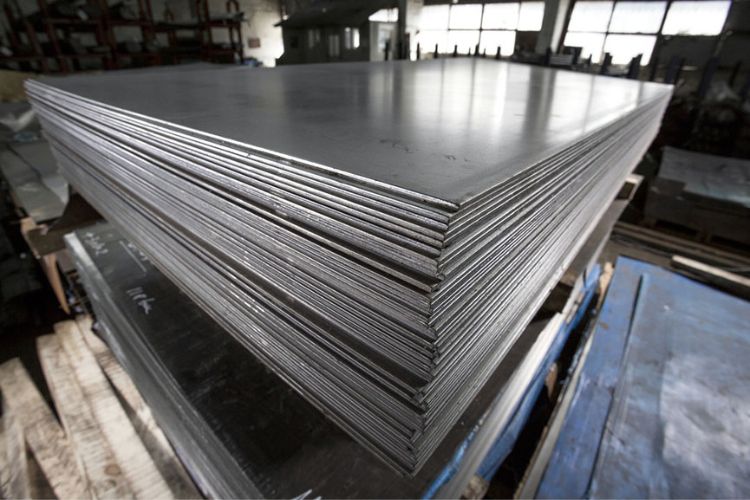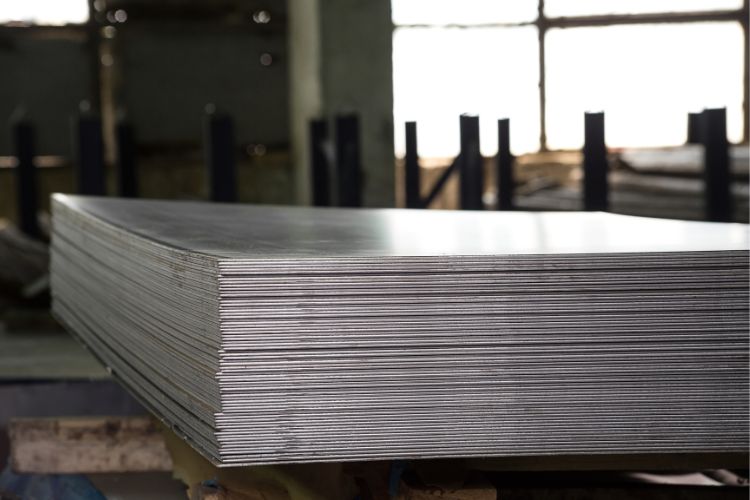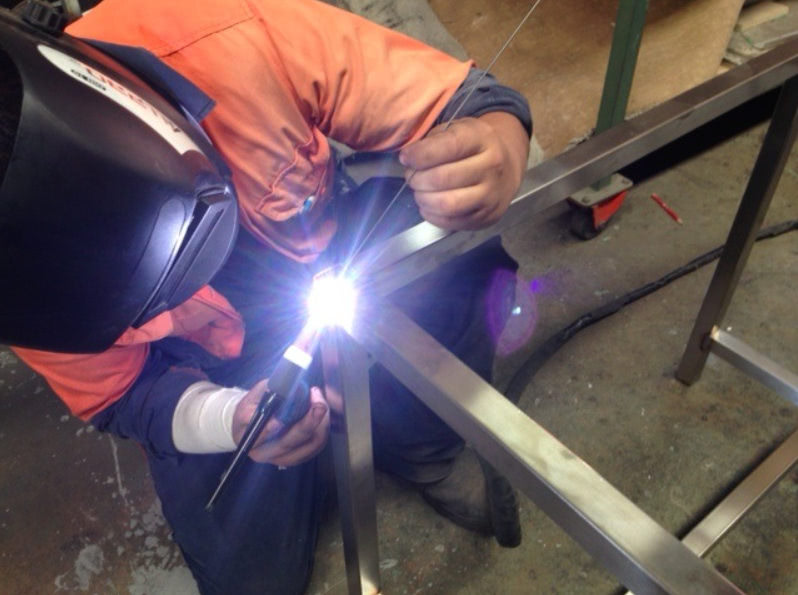When it comes to stainless steel, the different grades available on the market each come with their own characteristics and advantages to suit specific uses. While 304 and 430 steel look the same to the naked eye, they have some important differences that are essential to be aware of when choosing the right material for your next project.
Knowing the best grade of steel to use for your project will ensure you get the best, long-term service from your investment. Let’s compare the 304 and 430 stainless steel grades to see which is the best material for your purposes.

Source: Alexandru Rosu/Shutterstock
Stainless Steel Grade 304
Definition of 304 Grade Steel
Grade 304 stainless steel is one of the most commonly used stainless steels in fabrication. The weldability and formability of 304 grade steel do not come at the expense of durability or toughness. This combination of flexibility and strength makes it a popular choice for stainless steel fabrication.
Properties of 304 Grade Steel
Chemical composition:
- Carbon: <=0.08%
- Chromium: 18–20%
- Iron: 66–74%
- Manganese: <=2%
- Nickel: 8–10.5%
- Phosphorus: <=0.045%
- Sulphur: <=0.03%
- Silicon: <=1%
Applications of 304 Grade Steel
For stainless steel fabrication, 304 grade steel is one of the industry’s most popular materials. It’s the perfect choice of stainless steel for a variety of work environments, including kitchens, workshops and laboratories. Some of the most common products made from 304 grade steel include:
- Stainless steel benches
- Commercial kitchen layouts
- Surface for food preparation
- Bars
- Food processing.
Pros and Cons of 304 Grade Steel
Pros
i) Easy to clean and maintain: Grade 304 steel doesn’t require special cleaners and is naturally antibacterial, making it an ideal material for food preparation, medical facilities and laboratories.
ii) Strong and durable: 304 grade steel is very strong and durable, making it a popular choice for benches, kitchen surfaces, bars and other busy environments.
iii) Versatile: One of the reasons 304 grade stainless steel is so popular is that it is a very versatile material that can be made into a wide range of products and equipment.
iv) General purpose: 304 is suitable for both outdoor and indoor purposes and will not corrode unless it is exposed to harsh chemicals or it is used in and around marine environments for long periods of time.
Cons
i) Higher initial price: The initial price of 304 grade stainless steel is higher than 340. However, in the long run, this initial investment will pay off in durability and reliability.
ii) Can rust in harsher environments: While grade 304 will handle the temperatures and demands of most environments, for marine purposes, it is better to use a steel grade like 316.

Stainless Steel Grade 430
Definition of 430 Grade Steel
A ferritic stainless steel, 430 grade steel is a metal commonly used in a variety of industries for various purposes. It is best known for its affordability and moderate yield strength.
Properties of 430 Grade Steel
Chemical composition:
- Carbon: <0.12%
- Manganese: <1%
- Phosphorus: <0.04%
- Sulphur: <0.03%
- Chromium: 16–18%
Applications of 430 Grade Steel
Some of the most common items made from 430 grade steel include:
- Rail and road vehicles
- Kitchen layouts
- Storage tanks
- Shelving
- Utensils
- Mechanical parts.
Pros and Cons of 430 Grade Steel
Pros
i) Better initial price: 430 grade steel is cheaper than 304, so it may be your best choice if the initial cost is a big priority.
ii) High workability: 430 has a plasticity that allows it to be moulded into a wide range of shapes.
iii) Magnetic: This can be either a pro or con, depending on what you’re trying to achieve. In the right situations, this can be a desirable trait.
iv) Suitable for kitchens: 430 is perfectly suited to being used for refrigeration, cabinets, and cooking equipment such as ovens and fryers.
Cons
i) Not ideal for high-impact environments: The composition of 430 leaves it more vulnerable to high impacts and potentially cracking or warping.
ii) Lacks corrosion resistance: Due to a lack of nickel, 430 is not as corrosion resistant as austenitic stainless steels like 304 are. This makes it more vulnerable to oxidation.
iii) Poor heat resistance: Though suitable for intermediate heat, higher temperatures will damage 430 grade steel.
iv) Unsuitable for outdoors: 430 grade steel is suitable for indoor usage only.
Cost Comparison of 304 and 430 Grade Steel
The cost of each steel grade will fluctuate depending on the current market for certain elements. When comparing the two grades, 304 is usually more expensive than 430 grade steel because of the components that make up the chemical makeup of 304. The critical detail is that 304 contains 8–15% nickel, whereas 430 doesn’t contain any nickel. The nickel is the reason that 304 usually costs more than 430.
Corrosion Resistance of 304 and 430 Grade Steel
Stainless steel is bought and used for many reasons, including its corrosion-resistant qualities. Though both 304 and 430 grade steel are resistant to corrosion, the nickel content in 304 gives it an advantage.
Welding of 304 and 430 Grade Steel
Welding any stainless steel is best left to someone who knows what they’re doing to ensure you get the best results. When comparing 304 and 430, 430 grade steel is usually more challenging to weld, and the results are often more mixed. While there can be challenges to welding 304 grade steel, when done right, it does lead to a better product. It is important to note that 304 grade steel loses none of its corrosion resistance or strength when welded.

Heat Treatment of 304 and 430 Grade Steel
For 304 grade steel, solution annealing is performed at 1065–1120 °C. This is followed by rapid cooling, which prevents the precipitation of the chromium carbides. Stress relief is usually not required for 304 grade steel, and it cannot be hardened.
430 grade steel doesn’t react well to heat/quench hardening. The best heat treatment to use is annealing/normalising.
Maintenance of 304 and 430 Grade Steel
Along with its durability, one of the critical reasons 304 grade steel is so commonly used in kitchen environments is that it is incredibly easy to clean and maintain. In most scenarios, a good wipe-down will do the trick. It is also antibacterial, helping to keep work areas hygienic. 430 grade steel has similar qualities but is more likely to corrode or be damaged.
The Final Choice
Though 430 grade steel is a widely used material for products in many environments, overall, 304 grade steel will provide better value for money. Containing the element of nickel makes 304 grade the stronger, more corrosion-resistant choice for your kitchen layout, benches or other products.
When it comes to stainless steel fabrication, Martin Stainless Steel is your number one choice. Our expert team have helped a wide range of businesses create the perfect equipment, work surfaces and furniture for their establishments. For more information or to get a quote, get in touch with our friendly team today.
